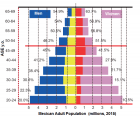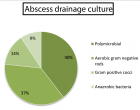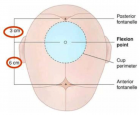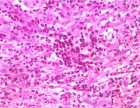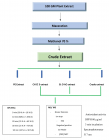Table of Contents
Stability determination of candidate reference genes in cucumber plants subjected to stresses from Phytophthora melonis
Published on: 15th April, 2019
OCLC Number/Unique Identifier: 8163474429
Stable reference genes are indispensable for ensuring the fidelity of determined gene expression levels. However, the expression levels of reference genes are unable to remain constant under all possible experimental conditions. Therefore, the stability determination of reference genes is necessary in an experimental system set. In the preset study, the stability of nine cucumber candidate reference genes (CsACT, CsUBQ, CsEF1α, CsCYP, CsαTU, CsCACS, CsTIP41, CsYSL8 and CsHEL) subjected to stresses from Phytophthora melonis(P. melonis) were determined using four different analysis methods, including Delta Ct, BestKeeper, NormFinder and GeNorm. The study results revealed that CsUBQ and CsCYP were the most stable genes suitable as internal control in cucumber plants under attack by P. melonis condition.
Isolation and biochemical characterization of Plant Growth Promoting (PGP) bacteria colonizing the rhizosphere of Tef crop during the seedling stage
Published on: 28th March, 2019
OCLC Number/Unique Identifier: 8056258929
The use of novel PGPR as bio inoculant is an alternative sustainable agricultural practice to improve soil health, grain quality, increase crop productivity, and conserve biodiversity. The aim of this study is to isolate, and characterized PGP bacteria colonizing tef rhizosphere during the seedling stage. For this concern, 426 samples of tef (Eragrostis tef) rhizosphere soils and roots were collected from East Shewa zone, Oromia regional state. 200 morphologically different bacterial pure colonies were isolated and screened for their PGP traits and biocontrol properties. Among these 40.5% isolates were positive for phosphate solubilization. 36% were positive for IAA production, 4.5% were positive for ammonia production, 19 % were positive for (EXPS), 15.5% were positive for protease production, 12.5% were positive for HCN productions, 9.5 % were positive for cellulase production, 4% were positive for amylase production, 3.5% were positive for chitinase production. For abiotic stress tolerance test, all of the isolates were grown well at 20oc and 30oc and neutral pH, 27% isolates were grown well at 4oc, 25.5% grew at 40oc, 25.5% were grown well on pH-9 and pH-11, 23.5% were tolerated pH-5, 3.5% grew at 50oc and 60oc, 13.5% were grown well on 5% NaCl (w/v), 3.5% were grown well on 10 and 15% NaCl (w/v), which indicated these isolates can survive in some extreme conditions. Totally 15 bacterial species having PGP traits, biocontrol properties, and abiotic stress tolerance ability were identified using the Biolog bacterial identification system. Among these, the majority of the identified PGPR have utilized carbohydrate, carboxylic acid, and amino acid, which are the main components of plant root exudates. The above results indicated that thus PGPR can be used as biofertilizers as well as biocontrol agents to replace agrochemicals to improve crop productivity. Hence, these species can be further formulated and used for greenhouse and field applications.
Evaluation of cold response in Ilex paraguariensis
Published on: 12th March, 2019
OCLC Number/Unique Identifier: 8056319032
Ilex paraguariensis, also known as ‘Yerba mate’, occurs naturally in Argentina, Brazil and Paraguay and is also grown in these countries with different intensities. Leaves and branches of this plant are used in the preparation of a stimulant beverage that beside social importance has notorious health impact. However, the cultivated herbs present low productivity, due to deficiencies in cultivation and harvesting techniques, as well as due to the abiotic stresses that this species is subject to. The discovery and characterization of cold response mechanisms in plants such as Arabidopsis thaliana, began research in order to unravel the physiological and molecular mechanisms in response to cold in other plant species. In this work, we studied the physiological response observed in Ilex paraguariensis plants submitted to low temperatures (0°C), with or without a pre-moderate acclimatization treatment period of (8°C).
Our results suggest the existence of an acclimation response in Ilex paraguariensis, similar to that described in other species of the same temperature.
Antiviral RNAi mediated Plant defense versus its suppression by viruses
Published on: 25th January, 2019
OCLC Number/Unique Identifier: 7991645511
The age-old battle between plants and viruses has many twists and turns. Plants acquired the RNAi factors to checkmate the viruses and the viruses encode VSRs to defeat RNAi for their own survival. Plants designed mechanisms to neutralize the toxic effects of VSRs and the viruses, in their turn, use host microRNAs to strengthen their infection processes. The infightings between these two entities will take different shapes with prolonged evolution and accordingly the researchers will dig these novel forms of duels not only to throw lights in the involved mechanisms but also to manipulate various antiviral strategies. Some of the research courses that might come up in the immediate future are discussed.

HSPI: We're glad you're here. Please click "create a new Query" if you are a new visitor to our website and need further information from us.
If you are already a member of our network and need to keep track of any developments regarding a question you have already submitted, click "take me to my Query."









